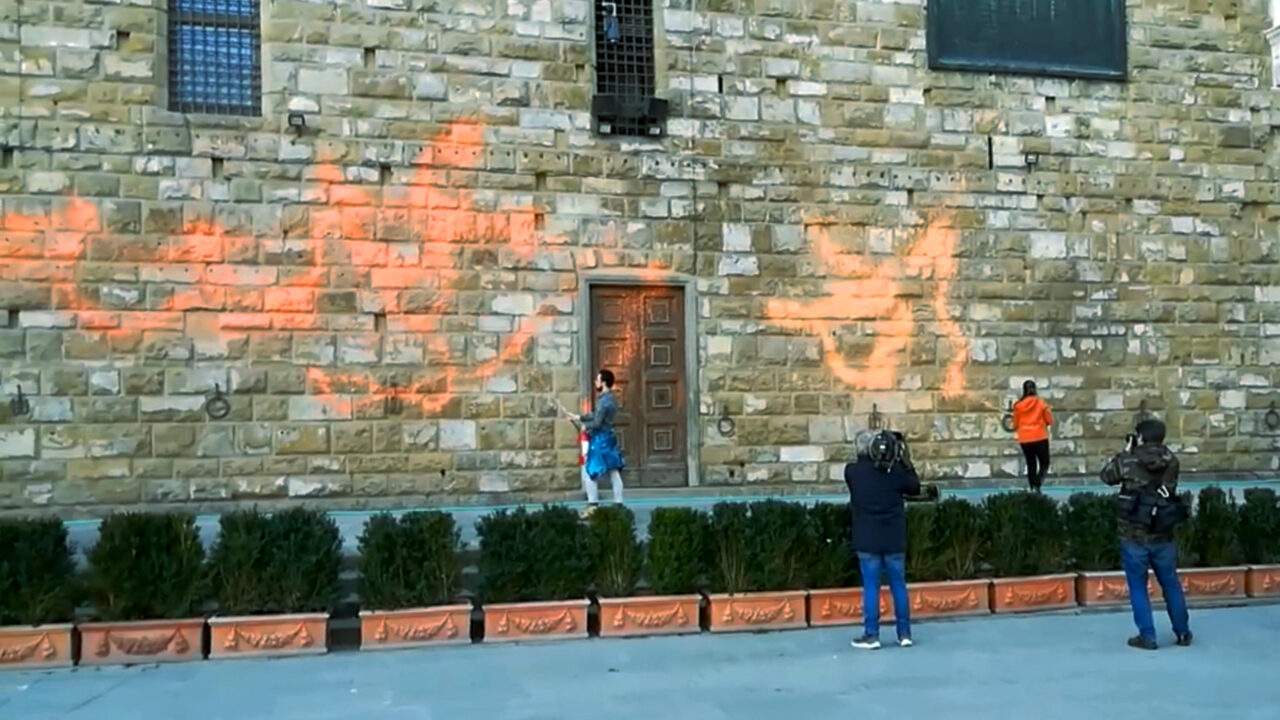Maxi-fines from 10 to 60 thousand euros for those who deface art: government supports bill
The regulation of crimes against cultural property is about to change shape. Today, in fact, the government decided to act on its own and, in the council of ministers held at 4 p.m., welcomed the bill proposed by Culture Minister Gennaro Sangiuliano himself, brought forward with the idea of curbing the actions of environmental activists against cultural heritage, such as those that have been taking place in recent months.
Two other proposals had recently emerged from Parliament. A first bill had been presented in November 2022, first signatory Claudio Borghi of the League: the objective of the bill in question was to introduce a sanctioning regime for the conduct of those who deface sites but also structures used for the exhibition, protection and preservation of cultural heritage exhibited in museums, picture galleries, galleries and other exhibition places of the state, regions, other territorial public entities, as well as in any other public body and institution. Borghi and the other co-signers, in the report, explained that they wanted to sanction precisely the conduct of those who “by going to places of culture for propaganda and protest demonstrations such as those of Just Stop Oil have been, engage in acts that seriously risk damaging or harming the integrity of cultural property exposed to the public, vandalizing the sites of exhibition, protection and conservation of the work, flanking the penalties already provided for those who realize actual damage to the cultural property.” The bill proposed an update of Article 518-duodecies of the Penal Code, inscribing the crime of destruction, dispersal, deterioration, defacement, defacement, and illegal use of cultural or scenic property among the crimes punishable by optional arrest in flagrante delicto, thus empowering police officers to arrest anyone caught in the act of damaging and deteriorating a property of artistic, historical, archaeological, ethno-anthropological, archival or bibliographic interest.
On the other hand, the second proposal, which is still being drafted, bears the signature of Marco Lisei of Fratelli d’Italia: still at the draft stage as of today, it proposes a type of urban daspo for those who have already been convicted of vandalism or damage to cultural property (the proposal is to impose, for those who have already been convicted, a distance of at least 10 meters from buildings subject to protection), with a fine of 500 to 1.000 euros for those who violate the prohibition, and imprisonment from six months to three years for those who deface or deface public or religious buildings or those subject to protection as cultural property (currently this punishment is instead provided only for those who “destroy, disperse, deteriorate or render, in whole or in part, unserviceable movable or immovable things belonging to others,” as stated in Article 635 of the Penal Code that Senator Lisei wants to amend).
Instead, the government-initiated bill introduces a maximal fine of 20 to 60 thousand euros for those who destroy or deteriorate cultural property, and 10 to 40 thousand for those who merely deface it: “Whoever destroys, disperses, deteriorates or renders all or part of cultural or landscape assets belonging to himself or others unusable or unusable,” the draft reads, “shall be punished with the administrative penalty of paying a sum of 20 thousand to 60 thousand euros.” The text goes on to stipulate that “anyone who, outside the cases referred to in the first paragraph, defaces or defaces cultural or landscape property belonging to him or to others, or destines cultural property to a use detrimental to its preservation or integrity or to a use incompatible with its historical or artistic character, shall be punished with the administrative sanction of the payment of a sum from 10 thousand euros to 40 thousand euros.”
The measures will not have retroactive value. The fines, however, will be in addition to the penalties already provided by the Criminal Code for crimes of damage, namely imprisonment from six months to three years. The draft itself specifies that, “The judicial authority and the administrative authority shall take into account, when imposing the penalties within their jurisdiction, the punitive measures already imposed and that the collection of the fine or the administrative pecuniary penalty shall be limited to the part exceeding that collected by the administrative authority or the judicial authority, respectively.”
“Attacks on monuments and art sites produce economic damage to the community,” comments Minister Sangiuliano. “Cleaning up requires the intervention of highly specialized personnel and the use of very expensive machinery. Those who carry out these acts must also assume financial responsibility. According to data provided to me by the Special Superintendence of Rome, the restoration of the Senate facade cost 40,000 euros. Well, those who damage must pay personally. Depending on the severity of the case, this ranges from a minimum of 10,000 to a maximum of 60,000 euros. These sums are in addition to those to which violators will eventually be ordered to pay in criminal or civil proceedings. These are, in fact, administrative penalties that can be imposed immediately by the prefect of the place where the act is committed, on the basis of complaints by public officials.”
 |
| Maxi-fines from 10 to 60 thousand euros for those who deface art: government supports bill |
Warning: the translation into English of the original Italian article was created using automatic tools. We undertake to review all articles, but we do not guarantee the total absence of inaccuracies in the translation due to the program. You can find the original by clicking on the ITA button. If you find any mistake,please contact us.




























